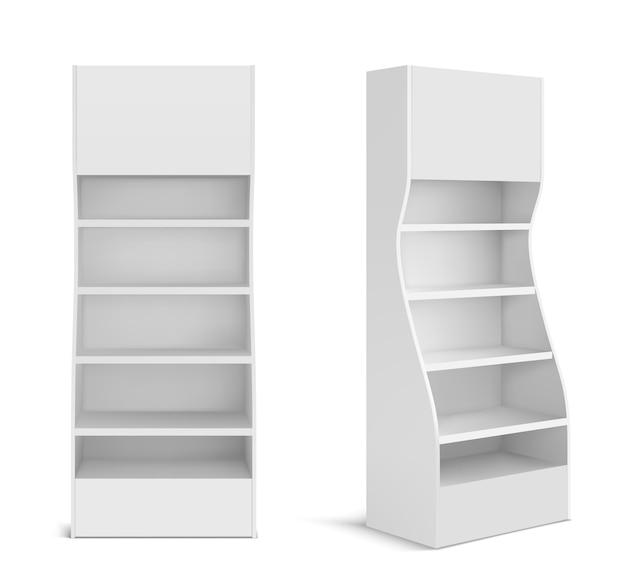Shelves are not only functional but can also be a stylish addition to any space. Whether you’re organizing books, displaying decor, or storing essentials, having sturdy shelves is crucial. One common question that arises when installing shelves is how far they can overhang a bracket. After all, you don’t want your favorite books tumbling down or your precious trinkets getting damaged.
In this blog post, we’ll dive into the world of shelf overhangs and explore important factors such as bracket placement, material choices, weight capacity, and more. We’ll also tackle related queries like where brackets go on shelves, how to calculate the angle of a shelf support, and how many brackets you need for different shelf lengths. So, let’s ensure your shelves not only look great but also provide the necessary support to keep all your belongings safe and secure.
How Far Can a Shelf Overhang a Bracket
So, you’ve decided to add some extra flair to your living space by installing some stylish floating shelves. But before you dive headfirst into this carpentry adventure, you may find yourself asking, “How far can a shelf overhang a bracket?” Well, fear not, because we’re here to shed some light on this shelfy dilemma and help you achieve the perfect balance between aesthetics and functionality.
The Overhang Conundrum: Finding the Sweet Spot
When it comes to shelf overhang, it’s all about finding the sweet spot. You want your shelves to be visually pleasing, but you also need them to be stable and capable of holding the weight of your beloved knick-knacks. The key is striking the perfect balance between style and support.
Considerations for Shelf Overhang
Bracket Strength: The Backbone of Your Shelf
Before your shelves become a hanging masterpiece, it’s crucial to ensure that your brackets can handle the weight. Sturdy brackets are the backbone of your shelf system, and their strength will have a direct impact on how far your shelves can overhang. Our friendly neighborhood carpentry rule of thumb suggests using brackets that are at least half the depth of your shelf.
Material Matters: The Weight Game
Wood, metal, or glass – the material of your shelves can significantly impact how far they can extend beyond the brackets. Heavy-duty materials such as solid wood or metal may require shorter overhangs to maintain balance and prevent unfortunate mishaps. On the other hand, lighter materials like glass shelves might allow for a bit more wiggle room.
Shelf Thickness: Think Thick for Stability
The thickness of your shelves is another factor to consider when determining the extent of their overhang. Thicker shelves lend stability and strength, giving you the freedom to push the boundaries a little further. However, if you’re working with thinner shelves, it’s best to play it safe and keep the overhang conservative.
The Magical Overhang Formula
Drumroll, please! Here’s the not-so-secret formula to help you calculate the maximum overhang for your floating shelves:
- Step one: Determine the depth of your shelves (let’s call this “D”).
- Step two: Divide D by 2 to get your maximum overhang measurement.
For example, if your shelf is 12 inches deep, your overhang should be no more than 6 inches. This simple calculation ensures that your shelves won’t tip over or put unnecessary strain on your brackets.
Balancing Style and Safety: The Final Verdict
Now that you’re armed with the knowledge of how far a shelf can overhang a bracket, it’s time to strike the perfect balance between aesthetics and safety. Remember, a well-supported and visually pleasing shelf system is the key to showcasing your trinkets without worry. So go forth and let those shelves shine bright like a diamond!
Key Takeaways:
- Ensure your brackets are sturdy to handle the weight.
- Material weight impacts the distance of overhang.
- Thicker shelves provide more stability.
- Use the magical formula: Overhang = Shelf Depth ÷ 2.
And there you have it, a comprehensive guide for determining how far a shelf can overhang a bracket. Now you can transform your bare walls into functional works of art with confidence, knowing that your shelves are well-supported and stylishly showcased. Happy shelf-installation adventures!
FAQ: How Far Can a Shelf Overhang a Bracket
In this FAQ-style section, we’ll answer all your burning questions about the overhang of shelves on brackets.
Where do Brackets Go on Shelves
Brackets are typically placed on the underside of shelves, providing support and stability. They should be attached evenly along the length of the shelf to distribute the weight evenly.
Will Plywood Shelves Sag
Plywood shelves are sturdy and resistant to sagging, especially when supported by brackets. However, it is essential to consider the thickness and quality of the plywood, as well as the amount of weight placed on the shelf.
How Wide Can a Bookshelf be Without Sagging
The width of a bookshelf without sagging depends on multiple factors, including the material of the shelf and the type of brackets used. As a general rule, consider additional support for shelves wider than 36 inches to prevent potential sagging.
What are Shelf Standards
Shelf standards are vertical tracks that have evenly spaced holes. They are mounted on the wall and serve as a support system for adjustable shelves. Shelf brackets can be easily moved and secured into the desired position on the standards.
How Much Weight Can a Heavy Duty L Bracket Hold
Heavy-duty L brackets are designed to support substantial weight. Depending on the specific bracket, they can typically hold anywhere from 200 to 500 pounds.
Do Shelf Brackets Need to be in Studs
While it is ideal to secure shelf brackets into wall studs for maximum stability, it is not always necessary. Using wall anchors or toggle bolts can provide sufficient support, especially when studs are not conveniently located.
How Much Weight Can a Bracket Support
The weight capacity of a bracket varies depending on factors such as its material, design, and size. Standard brackets usually have a weight capacity of 50 to 100 pounds, while heavy-duty brackets can handle significantly higher loads.
How do You Calculate the Angle of a Shelf Support
To calculate the angle of a shelf support, you can use a protractor or a digital angle finder. Place the tool on the horizontal surface of the bracket and read the angle indicated.
How Far Can a Shelf Span Without Support
The maximum span of a shelf without support depends on various factors, including the type of material used for the shelf and the weight it will bear. As a general guideline, avoid spans longer than 36 inches for most materials to prevent sagging.
Will MDF Shelves Sag
MDF (Medium-Density Fiberboard) shelves are prone to sagging if not properly supported. To prevent sagging, it is crucial to use sturdy brackets and consider additional support for longer spans.
How do You Stabilize a Shelf
To stabilize a shelf, ensure that it is securely fixed to the wall or supporting surface. Additionally, using brackets that extend further under the shelf can provide added stability.
How do You Stiffen Shelves
Shelves can be stiffened by adding support brackets at regular intervals along their length. Alternatively, reinforcing the underside of the shelf with an additional layer of material, such as plywood, can help increase rigidity.
How do You Measure a Shelf Bracket
To measure a shelf bracket, use a tape measure to determine the distance between the mounting holes. Additionally, consider the vertical projection of the bracket from the shelf surface when measuring for aesthetics and stability.
How Many Brackets do I Need for a 72-inch Shelf
For a 72-inch shelf, it is recommended to use a minimum of three brackets for adequate support. Placing them evenly along the length of the shelf helps distribute the weight evenly and prevents sagging.
How Much Weight Can a Steel Bracket Hold
Steel brackets are known for their strength and durability. Depending on the specific bracket, they can typically support weights ranging from 100 to 300 pounds, providing reliable support for various applications.
How Far Should a Shelf Overhang a Bracket
A shelf should overhang a bracket by approximately 1 to 2 inches for optimal support and stability. This ensures that the weight distribution remains balanced while reducing the risk of the shelf tipping or sagging.
How do You Support a Long Shelf
To support a long shelf, it is essential to use additional brackets in the middle of the shelf to prevent sagging. Properly securing the brackets into the supporting surface and using stud locations whenever possible will provide added stability.
How Many Brackets do I Need for a 36-inch Shelf
For a 36-inch shelf, it is recommended to use a minimum of two brackets. Placing them equidistant from the ends of the shelf will provide sufficient support and prevent any potential sagging.
How Long Should a Shelf Bracket Be
The length of a shelf bracket depends on the depth of the shelf and the desired level of support. As a general guideline, the bracket should extend at least two-thirds of the shelf’s depth to ensure optimal stability and weight distribution.
How Much of a Shelf Should a Bracket Cover
A bracket typically covers around two-thirds of the shelf depth for optimal support. This coverage ensures that the weight-bearing load is distributed evenly and reduces the risk of sagging.
How Many Pounds Can a Shelf Bracket Hold
The weight capacity of a shelf bracket varies depending on its design, material, and size. Standard brackets can typically hold between 50 and 100 pounds, whereas heavy-duty brackets are capable of supporting significantly higher weights.
Now that we’ve tackled these frequently asked questions, you have a better understanding of how far a shelf can overhang a bracket without compromising stability. Whether you’re undertaking a DIY project or looking to optimize storage, remember these guidelines to ensure your shelves are both functional and stylish. Happy organizing!
Note: The information provided is based on general knowledge and may vary based on specific products, materials, and circumstances. Always consult the manufacturer’s instructions and guidelines when installing shelves and brackets.

